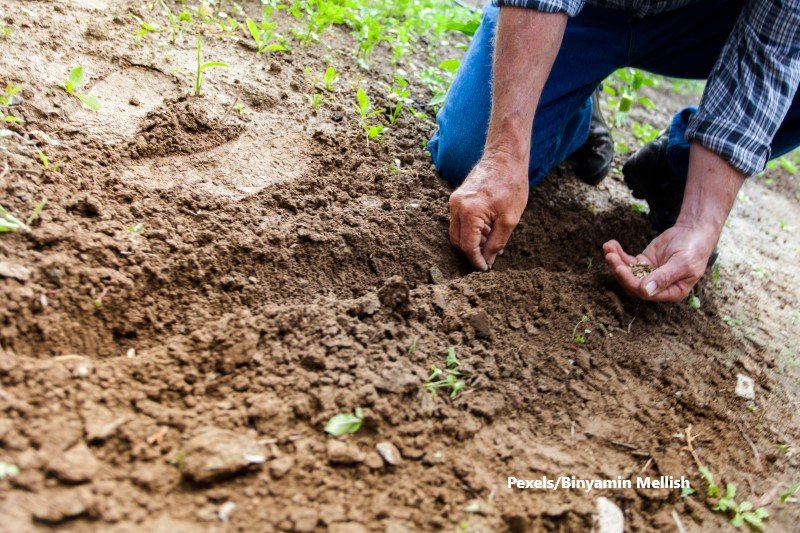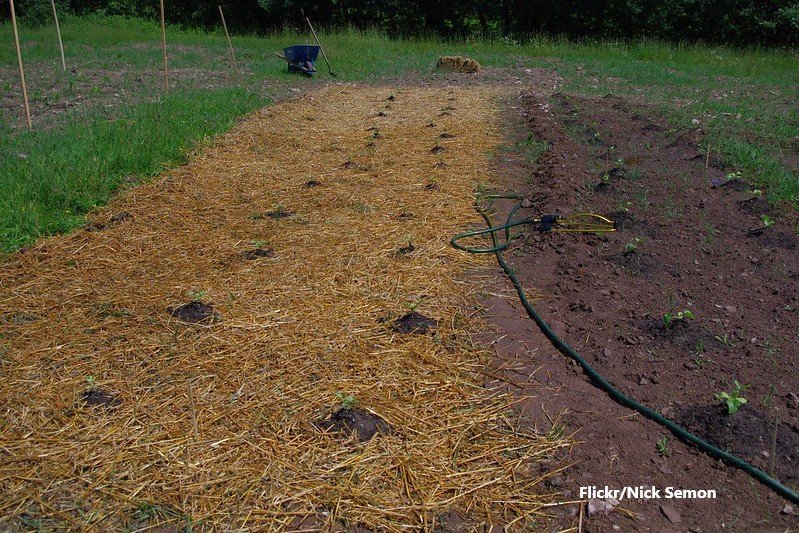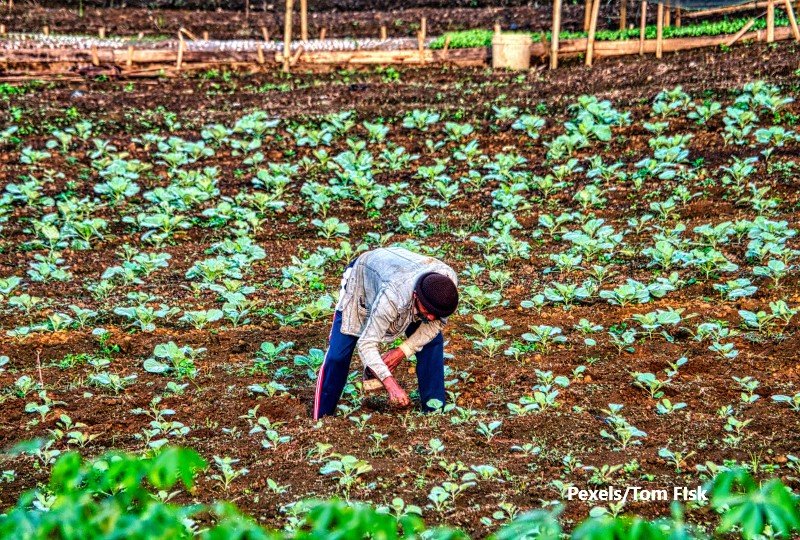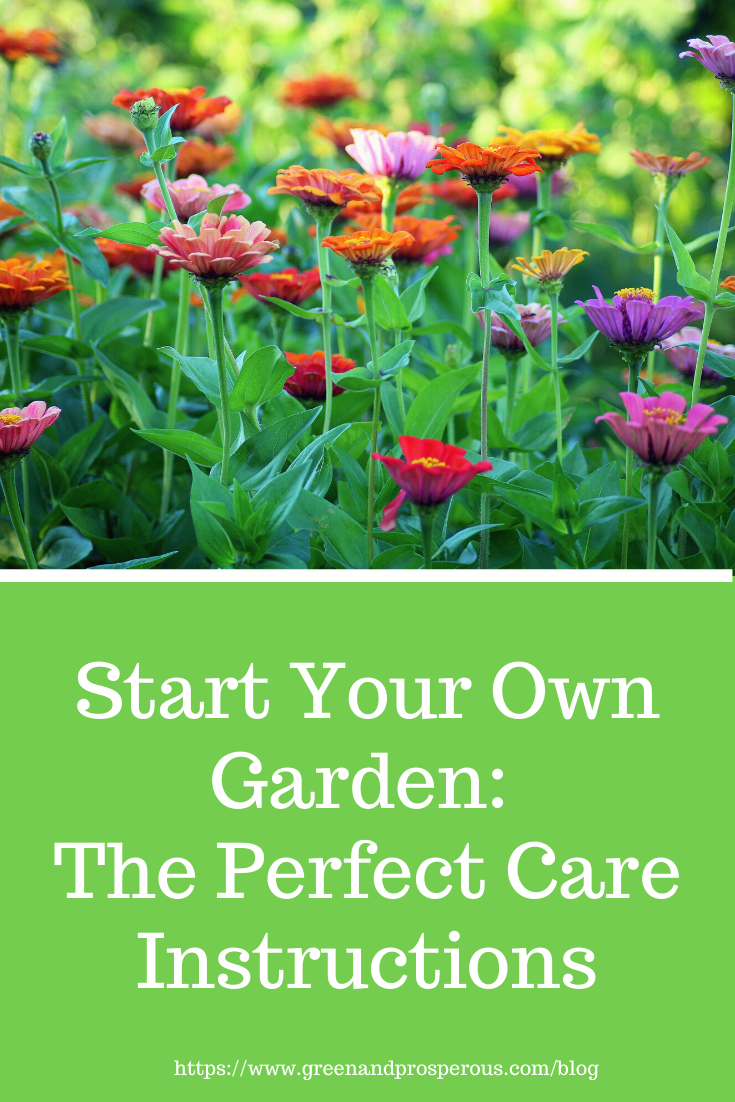Start Your Own Garden: The Perfect Care Instructions
/Start your own garden? It sounds like it would be a lot of work, right? However, this is a great way to save money on groceries and get closer to the natural rhythms of earth. This article will provide all the information you need to ensure that your garden thrives from start to finish!
What Do You Want Your Garden to Look Like?
The first step in starting your garden is knowing what you want it to look like. Do you want to plant vegetables, or do you prefer flowers? Maybe you’d like some of both? Make sure to map out your ideas before getting started. This is an important step that will help you to avoid poor results after you’ve gone through the trouble of planting.
Planting Vegetables
If you are looking to plant vegetables, make sure that you pick vegetables that will grow well in your climate and planting zone.
When it comes to planting time, take care to research the best time to plant your vegetables. For example, it is best to plant tomatoes in late May or early June in most of the United States. If you want to plant vegetables that won't require much work, there are plenty of options to choose from. A few examples include lettuce, spinach, carrots, and beets. These vegetables can also easily be grown in pots or containers on your balcony or patio.
Planting Herbs
You can also add herbs to your garden since they can also be relatively low maintenance. When planting herbs, make sure to pick plants that will grow well in the conditions of your garden. Popular culinary herbs include basil, thyme, mint, chives, and parsley. Be sure to experiment with different herbs to find the ones you like best!
Some people who are into the ganja culture grow their own little cannabis garden. In contrast, others prefer to have their cannabis or weed edibles delivered to their doorstep. If you're a weed enthusiast living in CA, some businesses provide weed delivery in Redding that can bring your product right to you!
Don't Forget Flowers!
Flowers can add beauty and color to any garden, and many flowers, such as squash blossoms, nasturtiums, borage flowers, and rose petals are also edible. When planting flowers in your garden, make sure to pick plants that will grow well in the conditions of your soil and climate.
Buy the Right Tools for the Job
To start your garden, you will need some essential tools. A shovel, rake, hoe, and watering can are a great place to start. If you are planting vegetables, you might also want to invest in a set of gardening gloves!
Plant in the Right Spot
Plants want a secure place to call home, so you need to pick a good spot for them to thrive when starting a garden. You need to ensure that the spot gets plenty of sunlight and has good drainage. Ask a neighbor or your local gardening center for advice if you are unsure. As a rule of thumb, most flowers, as well as vegetables and fruits that grow from flowers (e.g., tomatoes, squash, eggplant) require full or partial sunlight for at least 6-8 hours a day, so reserve your sunniest spots for these plants.
Make Sure to Mulch Your Plants
Mulching is the process of adding organic or inorganic materials to the soil's surface. This can help to improve soil health, enable plants to retain water and reduce weed growth. You can use several materials for mulching, such as straw, leaves, or bark chips.
How should you mulch? Start by spreading a layer of mulch around the base of each plant. Make sure to keep the mulch an inch away from the stem of the plant. Reapply mulch as needed, especially after rain or watering.
Water Your Garden Correctly
It would be best to water your plants twice a day during the summer and once a day during the winter. Watch out for the amount of water you give, since too much water or too little on a constant basis can be harmful!
How should you water your garden? Water the plants in the morning so that the leaves have time to dry before nightfall. Make sure to water the soil, not the leaves of the plant. Avoid watering when it is windy, as this will cause most of the water to be blown away. Add a layer of organic matter (such as compost) to your soil to help it retain moisture.
You can also invest in a rain barrel or irrigation system to conserve water and make this gardening tasks not only cheaper, but more environmentally friendly.
Check for Pests and Diseases
One of the unfortunate realities of gardening is that pests and diseases can often be a problem. If you notice any signs of pests, make sure to take action immediately!
Common pests and diseases affecting plants include aphids, spider mites, powdery mildew, and verticillium wilt.
How should you deal with garden pests or plant diseases? Check the plants regularly for any signs of pests or diseases. Remove any affected leaves or plants immediately. Use organic pesticides or fungicides to treat pests or diseases. Make sure to read the label carefully before using any pesticide or fungicide. Contact your local gardening center for more information on pests and diseases.
Fertilize Your Garden
Just like people, gardens need to be fed to thrive. You can buy fertilizer at your local gardening center or make your own using ingredients from your kitchen! Remember to read the instructions carefully to not harm your plants.
What type of fertilizer should you use for your garden? There are various types of fertilizer available, each with its own set of benefits. Here are a few common types of fertilizer:
Organic fertilizers: These fertilizers are made from natural ingredients, such as animal manure or Compost. They are slow release, which means they provide nutrients to the plants over time.
Inorganic fertilizers: These fertilizers are made from synthetic ingredients, such as ammonium nitrate or urea. They provide nutrients to the plants immediately, which can be harmful if not used correctly.
Fertilizer spikes: These are small stakes that you insert into the soil near the plant. The spike gradually releases fertilizer to the plant over time.
Fertilizer tablets: Similar to fertilizer spikes, these are small tablets that you insert into the soil near the plant. The tablet gradually releases fertilizer to the plant over time.
Liquid fertilizers: These are liquid solutions that you apply directly to the plant's leaves. They provide nutrients immediately, which can be harmful if not used correctly.
Slow-release fertilizers: These are solid pellets that you apply to the soil. The pellets slowly release fertilizer to the plant over time.
There is no one-size-fits-all for fertilizer use since it depends on the type of plants and soil you have.
In addition to fertilizing your plants with fertilizer, you can also add Compost to your garden. Compost includes organic materials that bacteria have broken down. Composting is also a sustainable way to add nutrients to your soil!
Final Tips for Maintaining Your Garden
Once your garden is up and running, it's essential to keep it healthy by performing regular maintenance. This includes basic tasks of watering, weeding, and fertilizing your plants as well as less frequent tasks like pruning and harvesting.
Check the soil before watering to see if it is dry. If the soil is dry, water the plants thoroughly until the soil is wet. If the soil is wet, do not water the plants! Remove any weeds that you see as soon as possible. Weeds tend to compete with your plants for nutrients and water, harming your garden. Fertilize your plants once a month with compost, fertilizer, or water-soluble fertilizers.
Pruning is the act of removing dead or damaged branches from a plant. It helps keep plants healthy by removing diseased or damaged branches. Pruning also helps plants grow in the desired shape. It should be done regularly, depending on the type of plant.
Clean your tools and equipment after each use. This will help them last longer and ensure that you don’t spread pathogens among your plants. Store your tools and equipment in a dry place when not in use. Check for damage to your tools and equipment and repairs as needed.
Harvest your garden regularly to enjoy the fruits (or vegetables) of your labor! Be sure to harvest all of the produce before it goes bad and refrigerate or freeze any product that you will not eat right away.
We hope this article was informative to start creating your garden! If you have any questions, be sure to ask a neighbor or your local gardening center. Happy gardening!
About the Author:
Nairi Bodroumian is a Certified Dietitian and food science aficionado with a special flair for creative writing. She's also a huge pasta lover who wants to open her own healthy restaurant one day!
Like this? Please pin!








































